Sometimes I travel to a new country and spend the entire time thinking about the articles I’m going to write.
In Mauritius, it was all about the budget breakdown.
Writing about trip expenses is kind of my thing. I love breaking down the stereotypes that people hold about travel (that it’s only for the wealthy) and proving it’s more accessible than you think. So when I was driving across Mauritius — a country that’s typically believed to be a luxury honeymoon destination — and averaging $50 (€46/£39) a day, I was brimming with excitement.
I couldn’t wait to share that somewhere this beautiful could be this affordable.
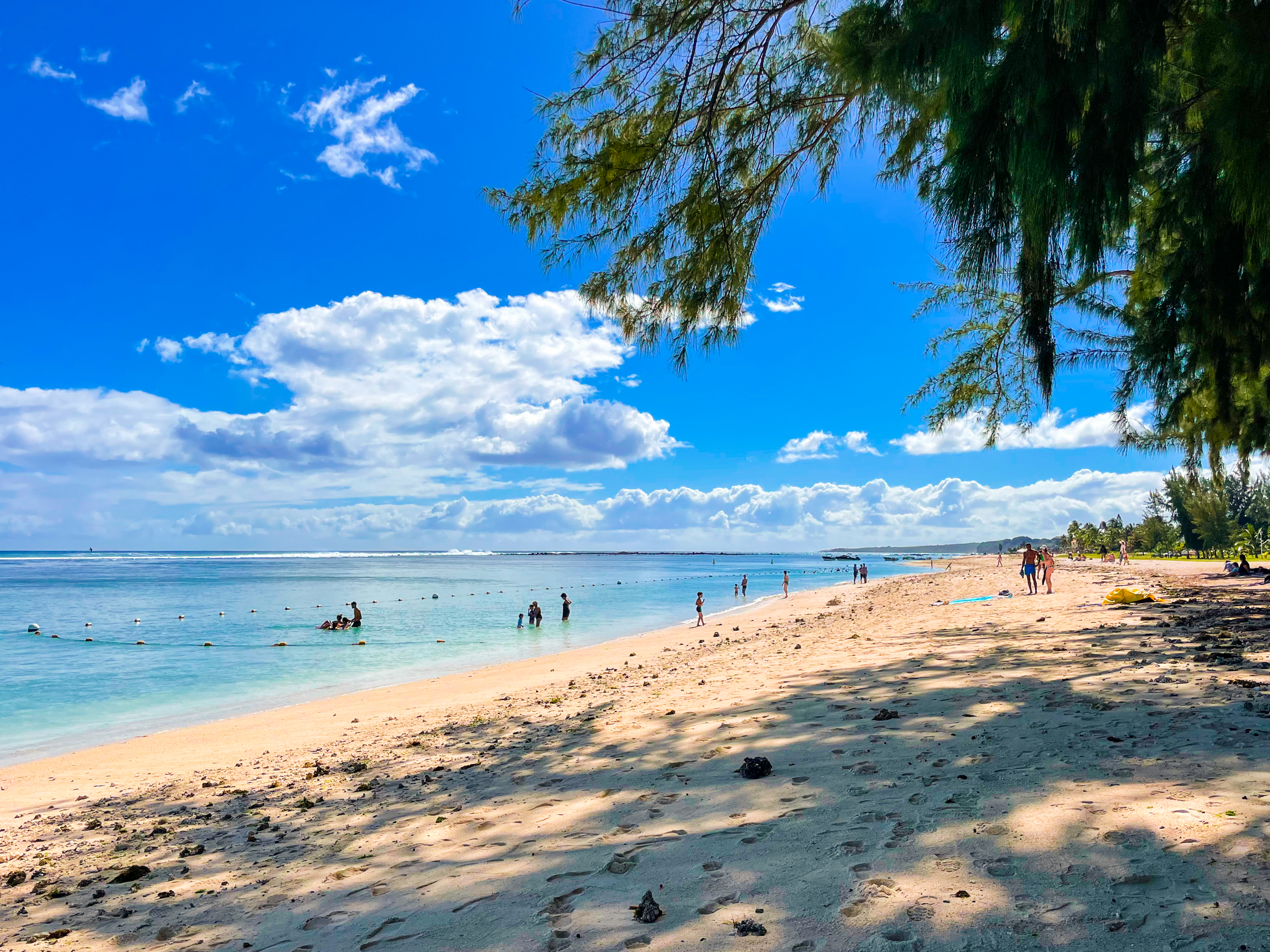
Clean and comfortable accommodation can be found for $30 a night, cars can be hired at $23 a day, and food is as little as $1 a meal. Throw in plenty of free activities (all the beaches!) and you’ve got yourself a seriously high-value destination.
You’ve probably noticed that prices have been skyrocketing post-pandemic.
The cost of travel, in particular, has drastically increased over the past year.
Well, not in Mauritius. This country has managed to remain relatively insulated from the price increases that have spread across the globe, making it a compelling option for a budget getaway in 2024.
Live in Europe? Consider Mauritius instead of Southeast Asia. The distances and cost of flights are similar (I paid $600 for a direct flight from London) and prices on the ground are only a little higher. I’ve got an in-depth seven-day itinerary for Mauritius on the site, too, so do take a look at that if you’re looking for inspiration.
Today, though, I’m thrilled to be finally be sharing all the juicy details about how much it costs to travel to Mauritius. Let’s start with accommodation.
The Cost of Accommodation in Mauritius
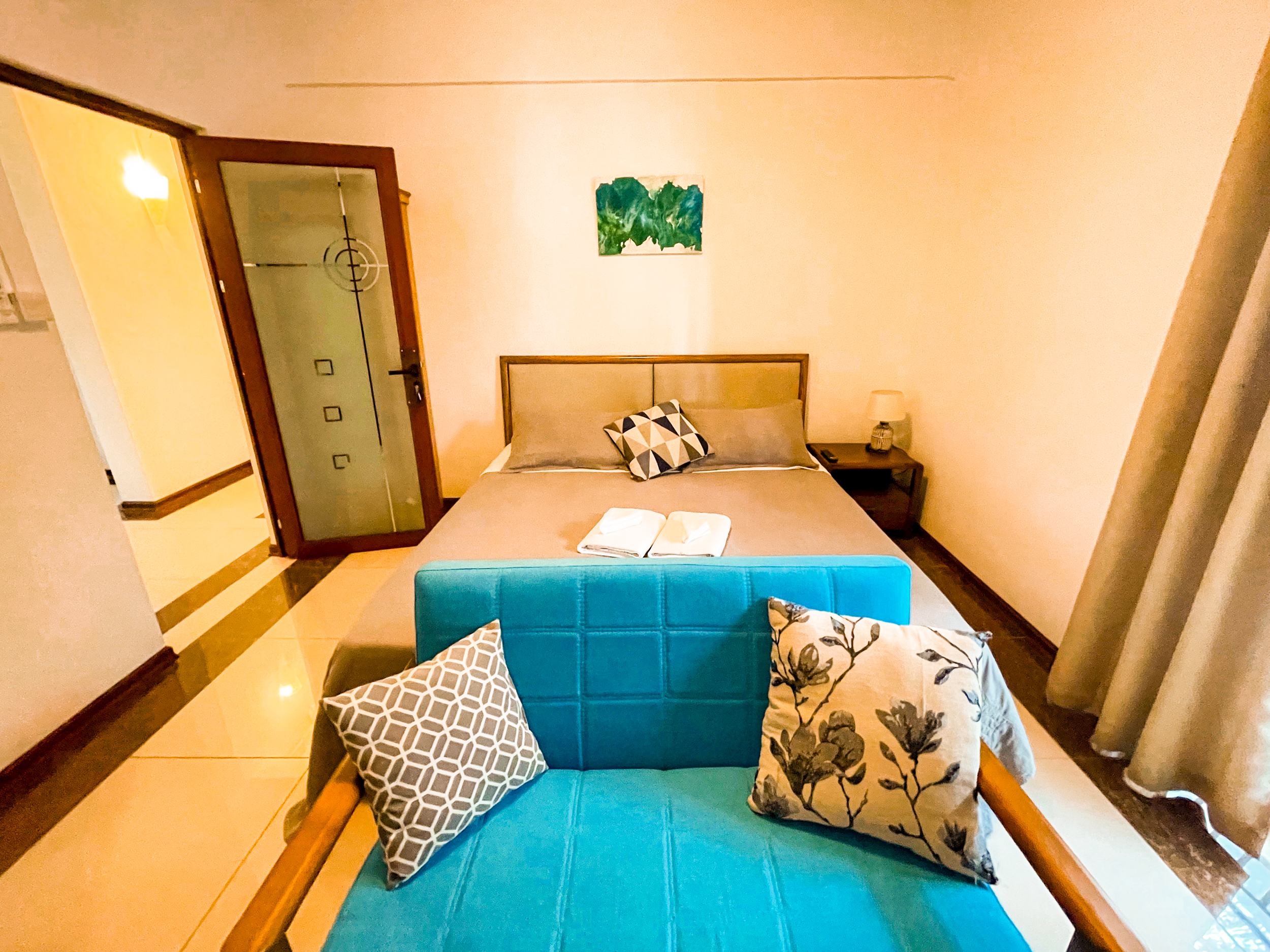
People tend to lump popular honeymoon destinations in with each other: The Maldives, Bora Bora, the Seychelles, Mauritius… aren’t they all eye-wateringly expensive?
Not so!
While you can splurge on some truly incredible luxury resorts in Mauritius, there’s also tons of budget options — as you can see above, I managed to score accommodation within the country for as little as $30 a night!
We’ll start with the budget options.
For all my backpackers out there who are excited by the prospect of dorm room living, you’re going to be disappointed in Mauritius. Hostels really aren’t a thing here, so you’re not going to find yourself packed into a room with seven other strangers while you’re on this island.
No, the cheapest options available are small guesthouses, usually with three to five rooms available, where you’ll stay in a clean, but basic bedroom with an en-suite. Sometimes the owners live on-site with you; sometimes they don’t. Most rooms have a balcony, are centrally-located, and have a small fridge and desk. One of the rooms we stayed in gave us access to a swimming pool, while another was a full-blown apartment with a living/dining room and kitchen available to use. They all felt like great value for money.
Prices for this level of accommodation come to between $25 and $50 a night (€23-€46 or £20-£40).
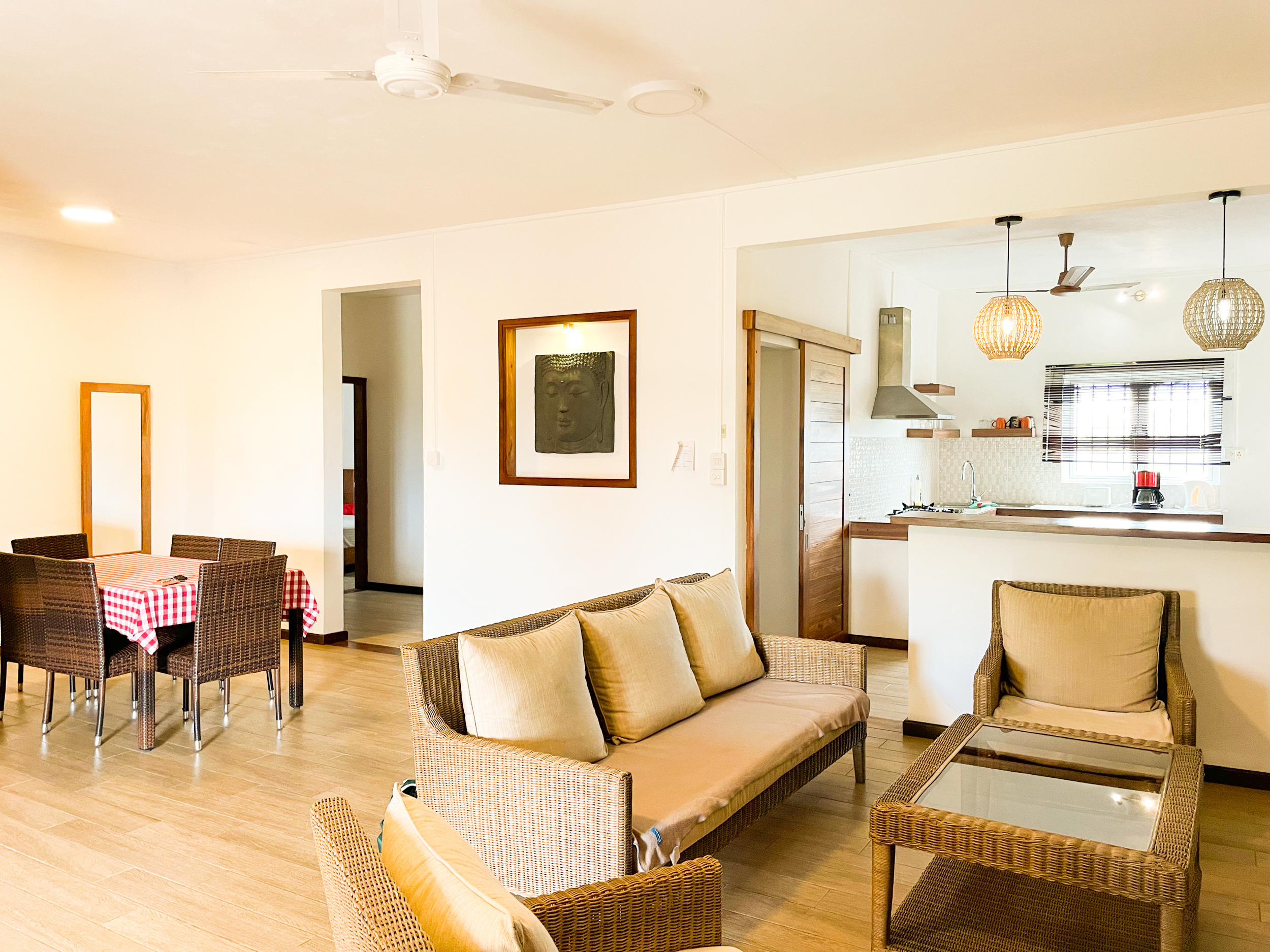
I always like to share where I personally stayed in a country to give you an idea of prices and quality of accommodation. Plus, I love to give recommendations, as I spend days researching the best properties to book! In Mauritius, I stopped in La Gaulette in the southwest, Flic-en-Flac on the west coast, and Mont Choisy in the north, and booked the following properties:
La Gaulette: We stayed in Mountain View and couldn’t believe how large the apartment was. As you can see from my photo above: it was more than a little spacious, with a well-equipped kitchen and gigantic balcony. We paid $46 (€42/£36) per night to stay here and thought the place was great. Friendly staff, excellent location within walking distance of dozens of restaurants and the supermarket, and it was clean and quiet. The Wi-Fi was speedy, too, which is always a bonus.
Flic-en-Flac: We stayed in Aux Plaisirs de la Viex at a price of $47.50 (€44/£37) a night. This was the most expensive place we stayed at in Mauritius but it did have a swimming pool! Like I’ve said and will keep saying: Mauritius offers so much value for money! This was a lovely guesthouse with welcoming, friendly owners. The rooms were clean and modern, and there was a large balcony for beers at sunset. It was less than a 10 minute walk from the beach and surrounded by lots of great restaurants.
Mont Choisy: We stayed in Residence Le Point Choisy in Mont Choisy at a price of $30 (€28/€24) a night. So inexpensive! Our room was spotless; compact, with a small balcony and decent bathroom. This was the largest guesthouse we stayed in, with several dozen rooms on-site, but it was still very quiet. We appreciated the free beach toys, towels, and umbrellas for guests to borrow and it was in a central location, within walking distance to the beach and several excellent restaurants.
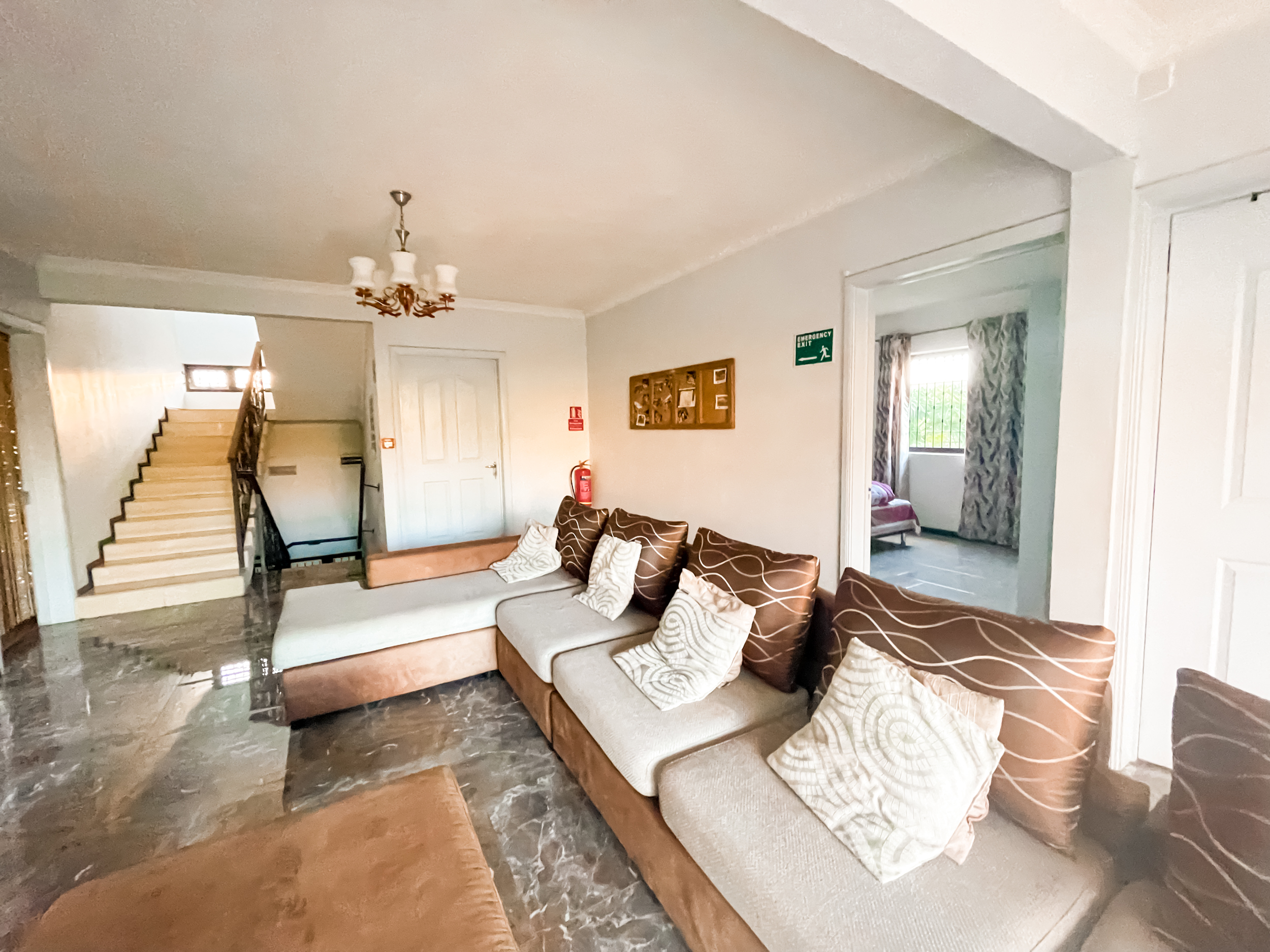
What about the mid-range and luxury options?
Mauritius is a bit strange here. You’ve got dozens upon dozens of excellent budget guesthouses and you have heaps of high-end luxury resorts. Both offer great value for money and are generally reviewed very highly.
The mid-range accommodation, though? It kind of doesn’t… really… exist?
I mean, you can definitely find properties for $100-150 per night (€90-€140/£80-£120). It’s just that when you take a closer look at them, they’re all of a similar quality to the budget guesthouses I linked out to earlier. I don’t know why you would choose to pay twice the price to stay in one of them.
There’s a couple of exceptions. Résidence au bout du Morne ($92 a night, or €85/£72) in Le Morne and Le Mandala Moris ($119 a night, or €110/£94) in the north of the island offer noticeable steps up in quality, but I really couldn’t find much else.
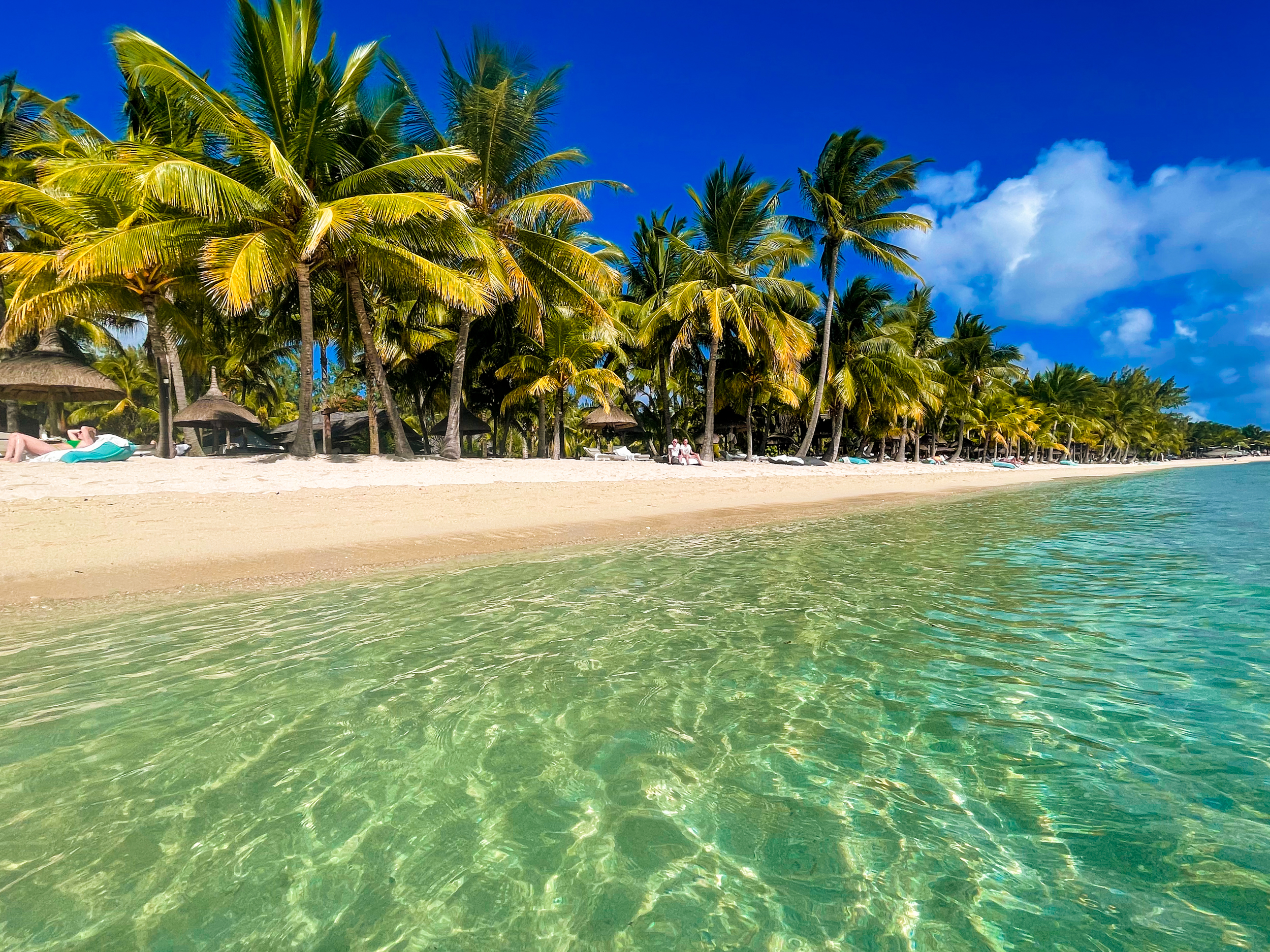
When it comes to five-star luxury resorts in Mauritius, I think you’ll be pleasantly surprised by the prices. Yes, they’re expensive in comparison to the budget guesthouses that I recommended, but the costs are still far lower than you’d expect to spend in other popular honeymoon destinations.
For example, the cheapest five-star hotel in the country is the Salt of Palmar, on the east coast, which is priced at just $111 a night! Yep, that’s a five-star hotel — and a well-reviewed five-star hotel at that — for just over $100 a night.
Down in Le Morne, you’ve got the LUX* Le Morne at a price of $267 a night, while in the north, there’s Seapoint Boutique Hotel for $336 a night. On the west coast, La Pirogue Mauritius comes in at $379 a night. These are some of the best hotels in the entire country, so you’re really getting a lot for your money.
The Cost of Transportation in Mauritius
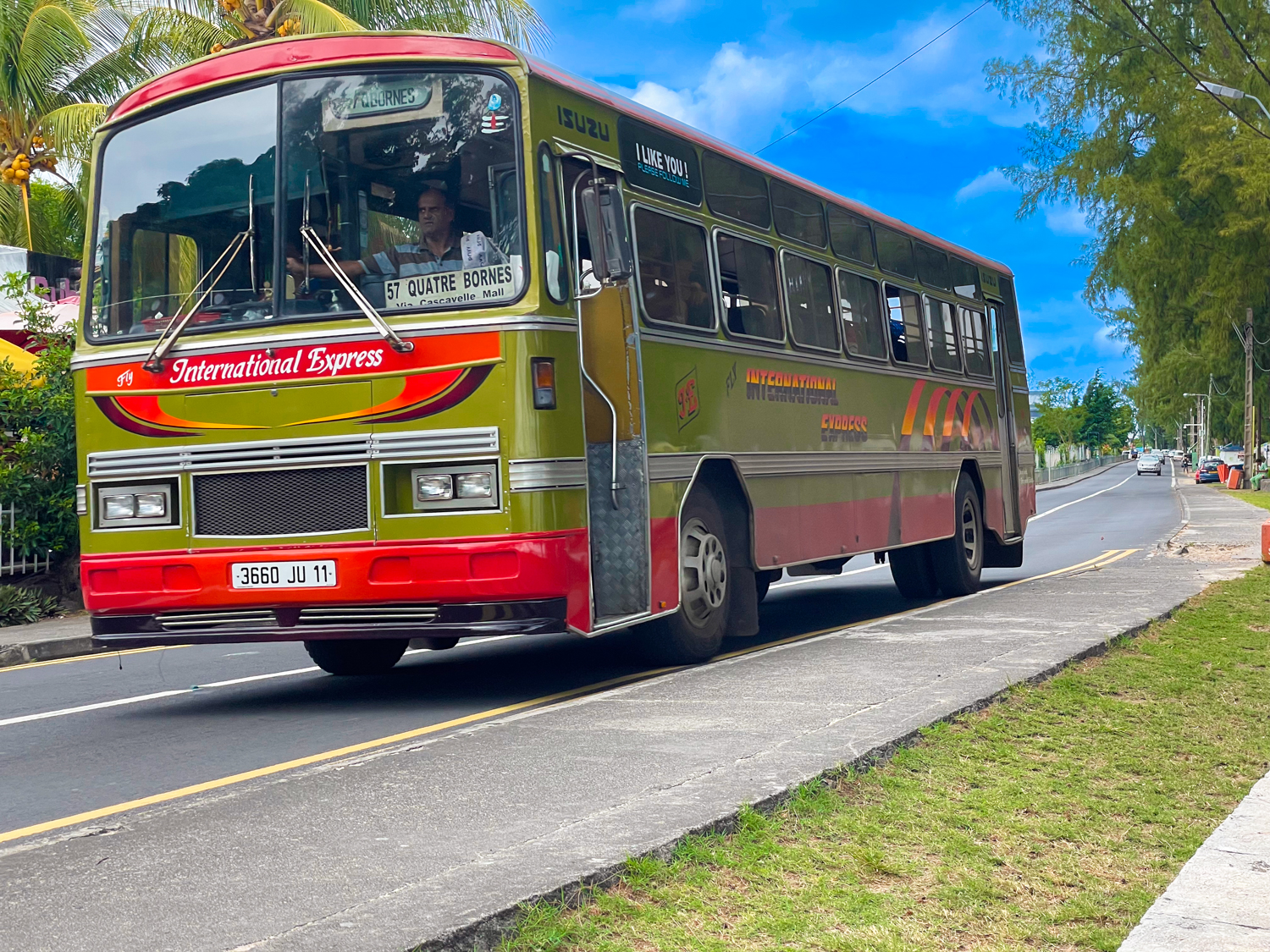
I’ve said it before and I’ll say it again: Mauritius is a country that was made for road tripping.
Driving our little rental car around the circumference of the island was a true travel joy and one that I can highly recommend. We booked through Discover Cars and paid $160 for a Hyundai i10 for seven days; working out at a cost of $23 (€21/£18) per day. A week’s worth of petrol, driving the entire coastline (roughly 250 km, or 155 miles), came to $41 (€38/£32).
The roads were well-maintained and relatively quiet outside of the main population centres, so driving wasn’t difficult and I felt safe at all times. The local drivers can be a little aggressive, but it was nothing we couldn’t handle. As you can see from my photo above, they do drive on the left in Mauritius, so that’s something to keep in mind if you’re not typically used to that. Automatic transmission is more common (and cheaper) than manual cars in Mauritius.
We rarely paid for parking on our road trip, either. All of the beaches have free parking beside the sand, along with the supermarkets and tourist attractions. The main tourist enclaves in the southwest, west coast, and the north all have free street parking.
The only locations where you might have to pay for parking are within main cities, like Port Louis, Quatre Bornes, or Curepipe. It’s never too expensive, though; we paid $0.50 to park our car for one hour in the capital of Port Louis.
Below are the average prices you can expect to spend on a range of rental car sizes in Mauritius. The cost doesn’t change throughout the year, so is accurate for 2024, whether you’re visiting in low or high season:
- Automatic economy car: $23 per day
- Automatic compact car: $25 per day
- Automatic intermediate car: $33 per day
- Automatic standard car: $40 per day
- Automatic full-size car: $53 per day
- Manual economy car: $30 per day
- Manual compact car: $33 per day
- Manual intermediate car: $53 per day
- Manual full-size car: $63 per day
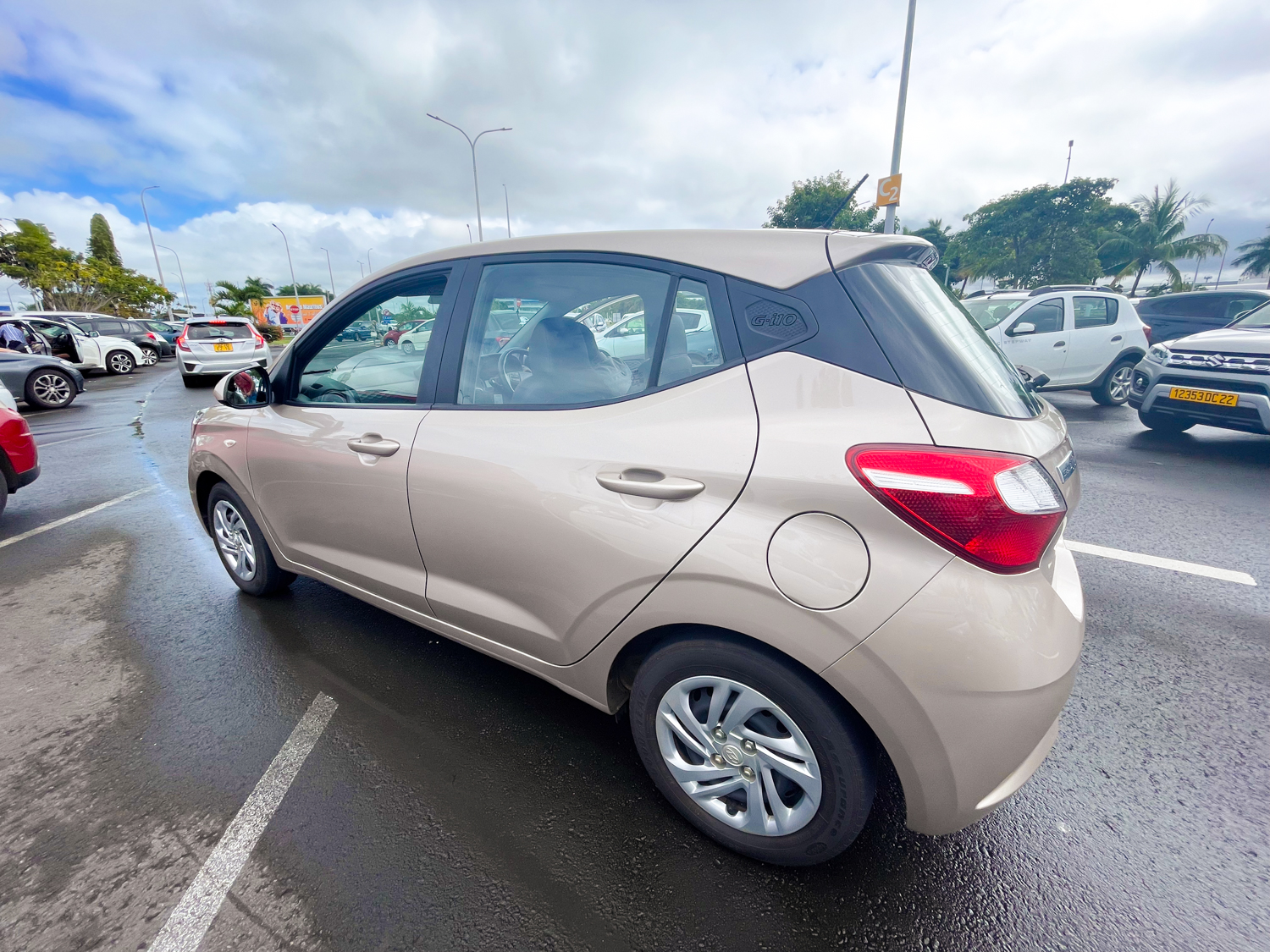
But what if you don’t want to drive?
I’m arranging my face into a grimace in response.
There is an extensive bus network in Mauritius, but it can be quite complicated to operate as a tourist. There isn’t an official timetable, Google/Apple Maps has no public transportation information, and the buses are slow and old — without air conditioning — so it doesn’t make for the most comfortable of journeys.
Let’s just say, you could find yourself waiting by the side of the road for an hour in the heat, not knowing when your bus will eventually arrive. And when it does arrive, you could then be looking at three hours inside, plus multiple changes, for a journey that would have taken less than an hour by car.
The website Mauritius Buses publishes an inaccurate timetable (and the website is broken more times than it is functional), but is still the best resource for figuring out which number bus to take and the routes that are possible.
Inside the buses, there isn’t a section for luggage, and no overhead luggage racks, so if you’re travelling across the country in this way, you’ll want to be doing so without much stuff. You’ll need to keep your suitcases and backpacks at your feet; there isn’t a lot of room.
It is, however, extremely cheap. Think: $1 to travel for an hour across the island. Once you get on board, you take a seat inside and a conductor will come to you to collect your money. Try to keep coins for this situation.
The buses aren’t all bad, however. If you’re planning on basing yourself in just one location for the duration of your stay — so didn’t want to hire a car — I’d consider using the buses to beach-hop along the coast. As an example, a bus that we took from Mont Choisy to Grand Baie (a 10-minute journey) cost just $0.15!
And so, if you have an abundance of time and patience, along with a determination to save money and a love of adventure, Mauritius by bus may be the right option for you.
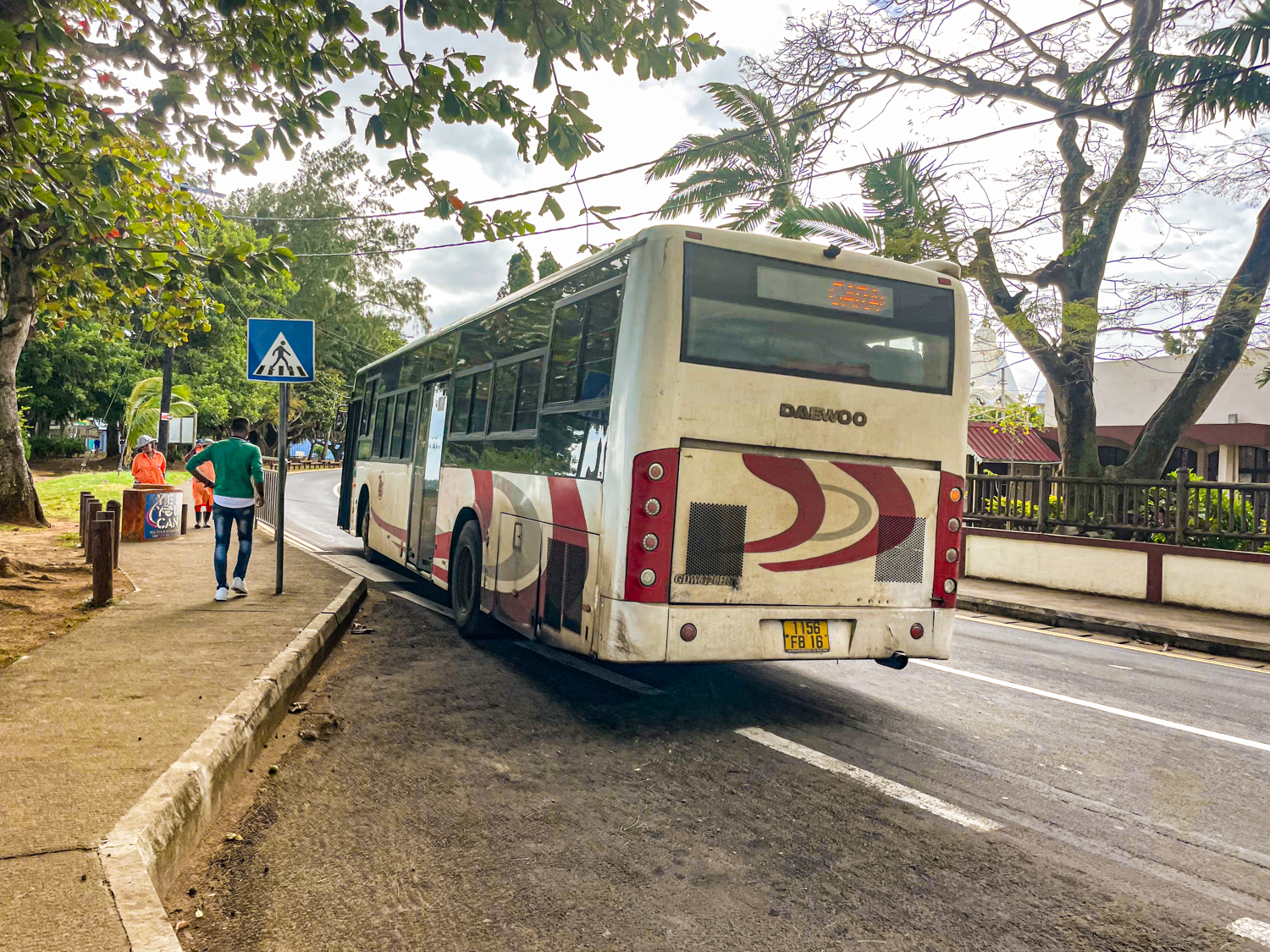
What are the other options?
There are car transfers available to book online and in person. The cheapest that’s available online is operated by Holidays R Us; they charge just $43 for a transfer to anywhere on the island, so are a good option for getting from the airport to your accommodation.
This is a pretty decent price for Mauritius and only a little higher than what locals pay to travel a similar distance; it’s probably more affordable than what your accommodation would charge, too. I’d consider utilising this service if you were going to spend your vacation in one spot (especially if you’ll be staying in Le Morne, Grand Baie, or Flic-en-Flac) and won’t need access to a car while you’re there.
Taxis do exist in Mauritius and you can even hire drivers to take you on a full-day tour of the island. You can expect to pay between $65 and $85 for eight hours in a car with a driver, following an itinerary of your choice. This probably gives you some idea why I recommend renting your own vehicle — $85 is the equivalent of three days of car hire, making it much better value for money.
Hailing a taxi on the street for shorter journeys can work out to be expensive if you stand out as a foreigner; I heard stories of people being quoted $30 for a 10-mile taxi ride!
There aren’t meters in the taxis in Mauritius, so the price will be spontaneously set by the driver based on what they suspect you can afford. It’s a good idea, then, to ask a local before calling a taxi to get an idea of what you should be paying for the ride — this could be your accommodation owner, staff in a restaurant, or even somebody in the street: Mauritians are so friendly that I’d be surprised if they weren’t happy to help.
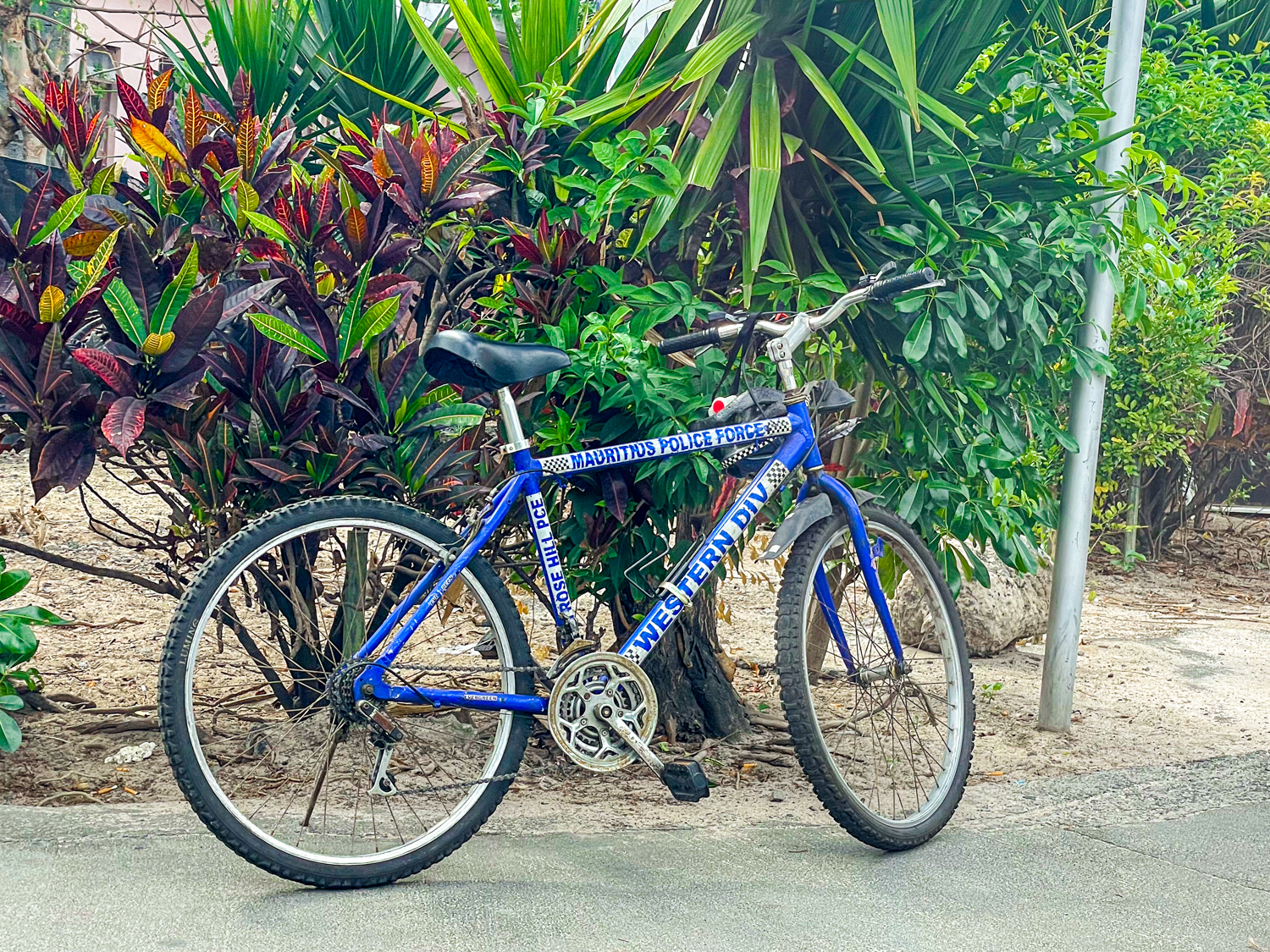
In terms of ride sharing apps, the best one to use in Mauritius is called Yugo, and it’s the one with a blue and orange logo in the app store.
There are two others called Ala-Lila Taxi and MoTaxi Mauritius, but there aren’t as many drivers using those, so I wouldn’t bother downloading them. All three of the apps are kind of janky, so don’t expect a slick interface like you’d get with Uber, and don’t be surprised if MoTaxi doesn’t work at all.
It’s also more expensive than you’d pay as a local, but cheaper than grabbing a taxi on the street. We paid $10 for a 5 mile, 12 minute journey with Yugo from Grand Baie to Trou-aux-Biches.
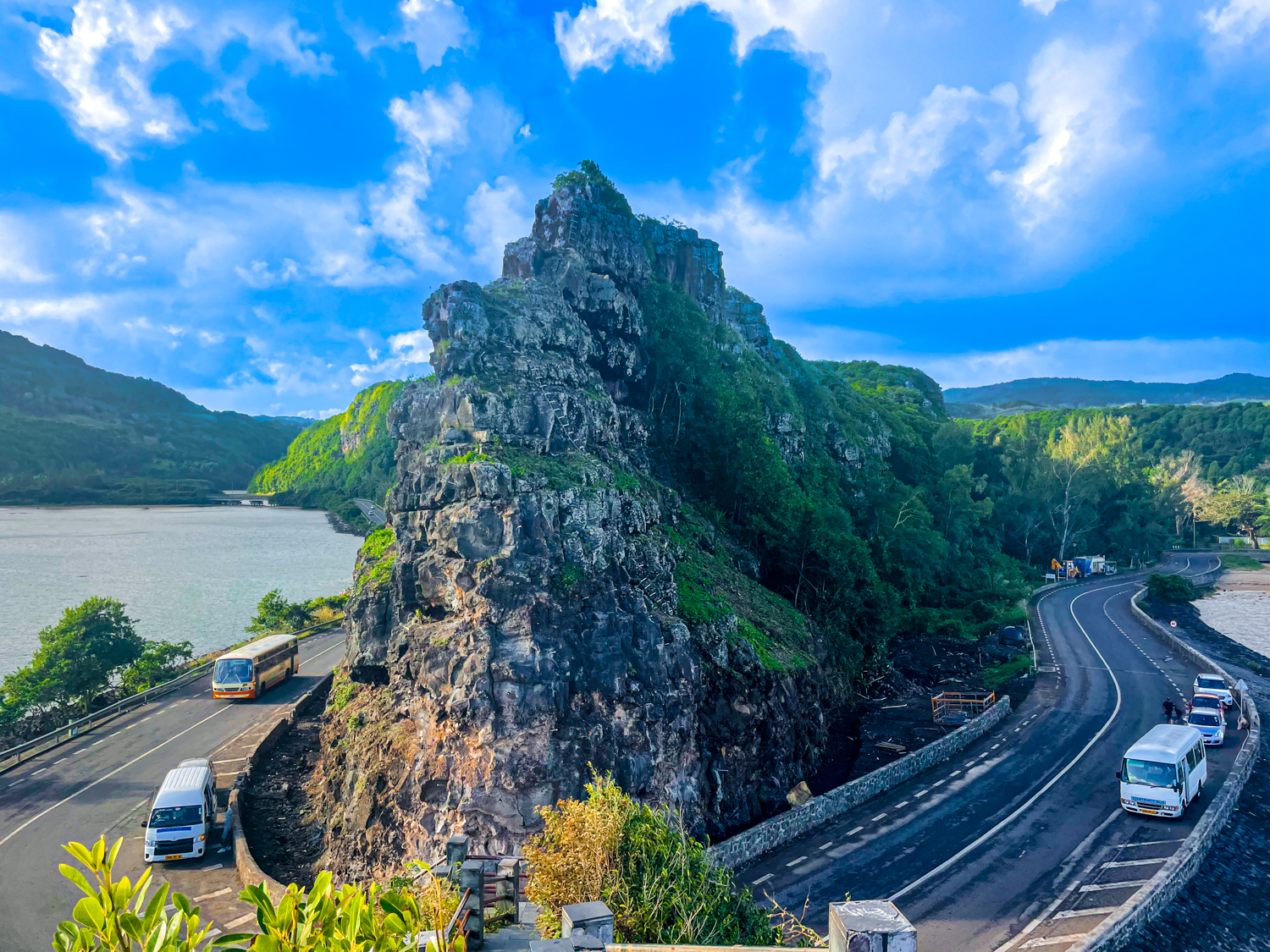
If you’re competent on two wheels and keen to rent a scooter while you’re in Mauritius, that’s totally possible. (You’ll need a motorbike license, though.)
You’ll be looking at paying $13 per day to hire a 125cc scooter. While the roads are well paved, the local drivers are aggressive, roads are narrow, and scooters are rare on the roads (so drivers won’t be looking out for you). It can therefore be a bit dangerous to scooter the entire island, so I’d limit your explorations to the area you’re staying in.
For the sake of completionism, I’ll mention briefly that there is a train in Mauritius, which runs between Port Louis and Curepipe. The vast majority of travellers won’t have a need to make this journey, but if you happen to be one of the few, allow me to introduce you to the brand new Metro Express.
This light rail system launched in 2022 and has been steadily increasing the number of destinations it reaches every year since. As of 2024, you can use it to travel between the capital and Curepipe at a cost of $1. As mentioned, most travellers won’t spend much time in either destination, but if you will, it won’t be expensive to get between the two.
And so, to summarise this section: Mauritius is difficult to navigate without a car, but if you’re willing to put in a little effort, it can still be done. It’ll be cheap, but it won’t be easy.
The Cost of Food in Mauritius
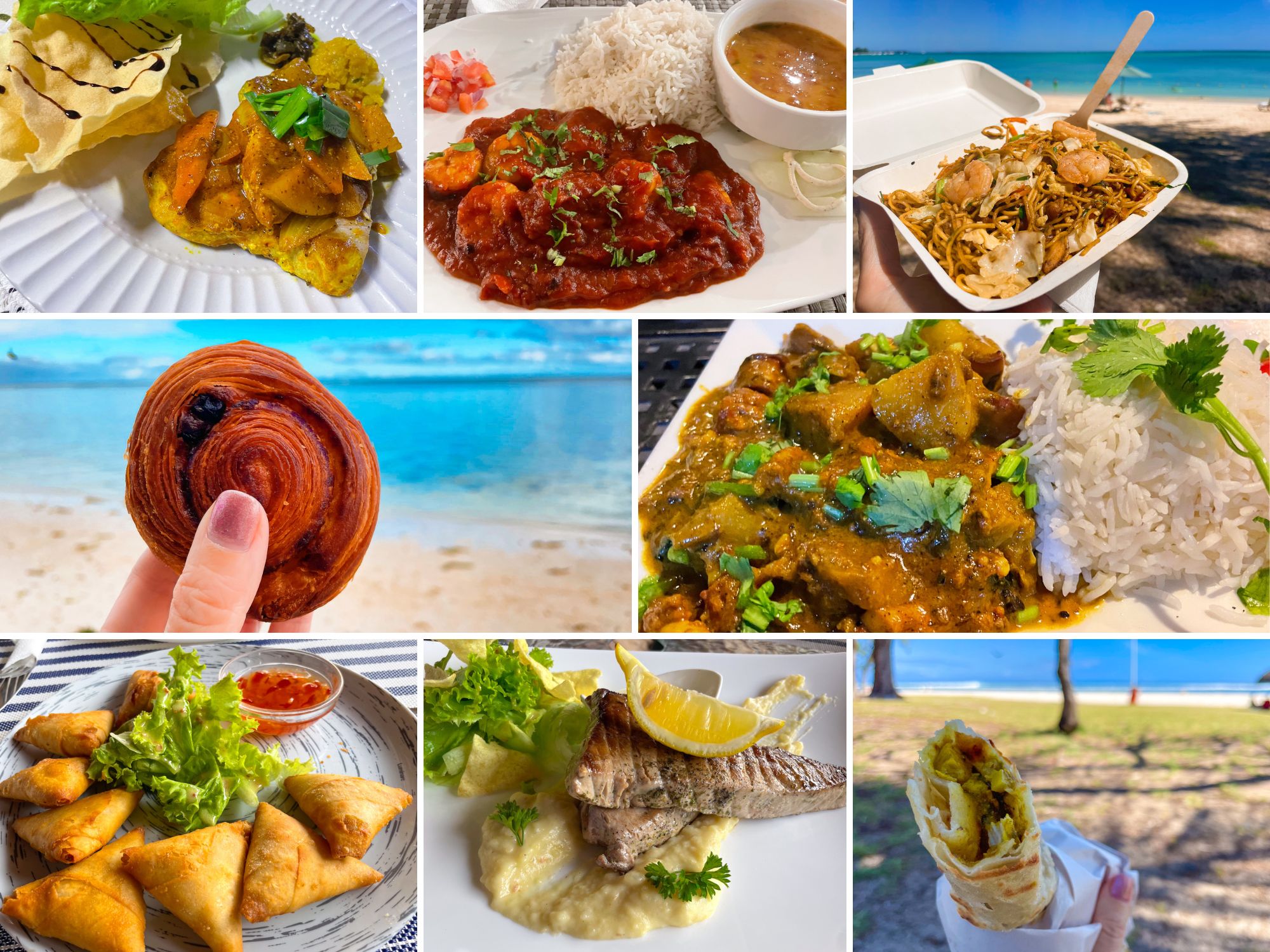
I didn’t know what to expect from the food in Mauritius, so I was pleasantly surprised to encounter such a diverse and interesting cuisine.
Being an African country, you obviously have influences from the continent shining through in the spices that are used in food. But not only that, you also have a population that’s 75% Indian, giving you access to rich curries and flaky rotis. You’ve got the French colonial impact that left behind amazing bread and pastries and being an island, you’ve got tons of delicious, fresh seafood. There’s even a Chinese influence that’s resulted in a plethora of noodles being utilised in the locals’ cooking.
In other words, this is a truly unique cuisine and I had so much fun trying all of the new-to-me options.
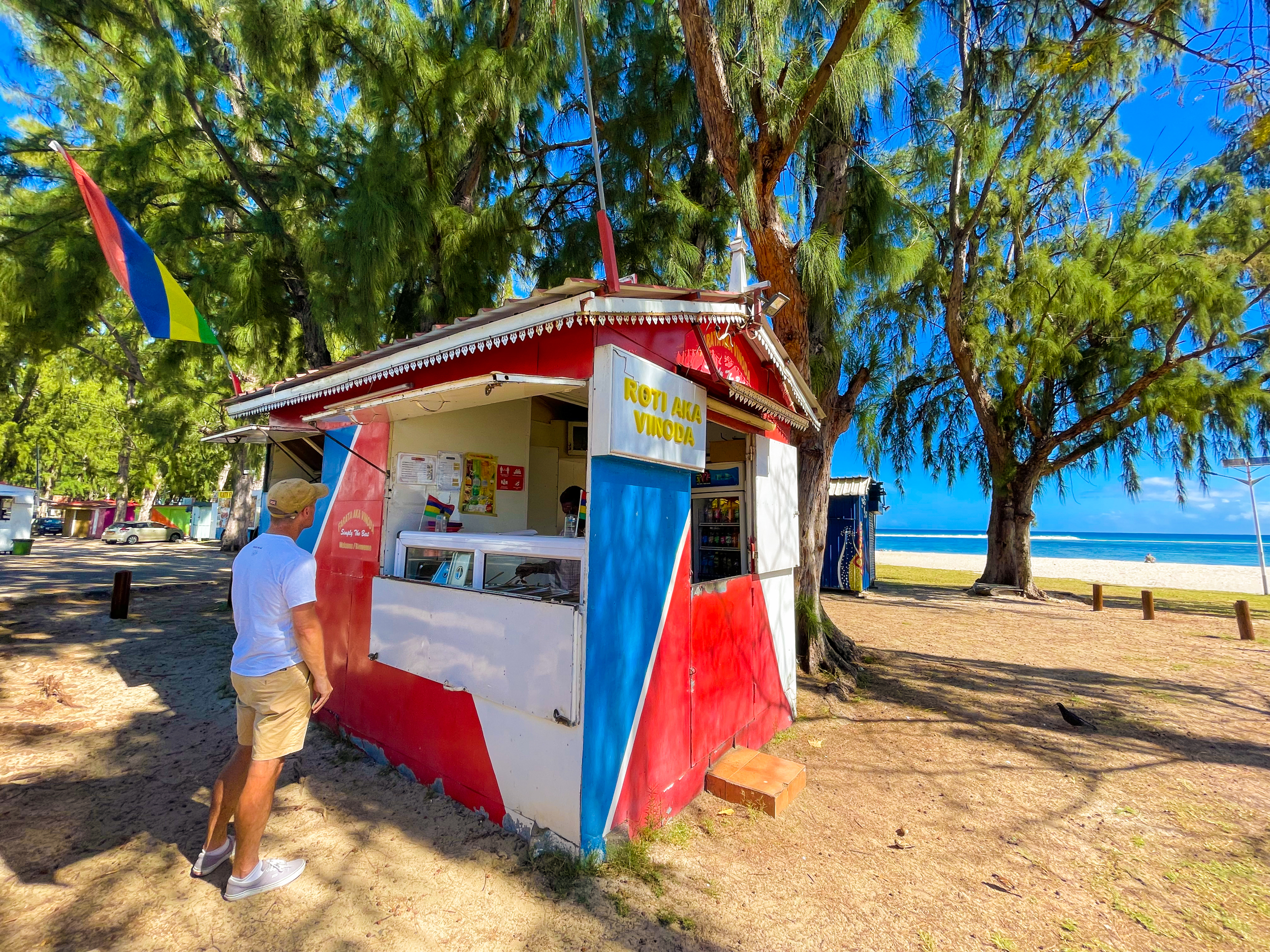
Happily, Mauritius is big on street food, so if you’re going to be travelling on a tight budget, you’ll find it so easy to get by on as little as $5 a day. My favourite street food snack was the rotis from Farata AKA Vinoda in Flic-en-Flac. Comprising a rolled up roti bread with a curry filling in the middle, it was flavourful and inexpensive. Two were enough to keep me full for lunch and were priced at $0.60 each.
Other street food classics in Mauritius include gateau piment (fried split pea fritters with lots of chilli) at a price of $0.09 each. Crispy, fried samosas can also be found across the island with various fillings for a similar price; around $0.10 each.
Napolitaine biscuits are extremely well-known in Mauritius: a snack made up of two buttery biscuits sandwiched around some strawberry jam, then coated in Barbie-pink-coloured icing. You can buy them for $0.80 each and they’re surprisingly filling.
You can grab bags of pickled pineapple and mango with a dusting of chilli powder for $0.20; a great option for filling up your tangy-sweet-and-spicy quota for the day.
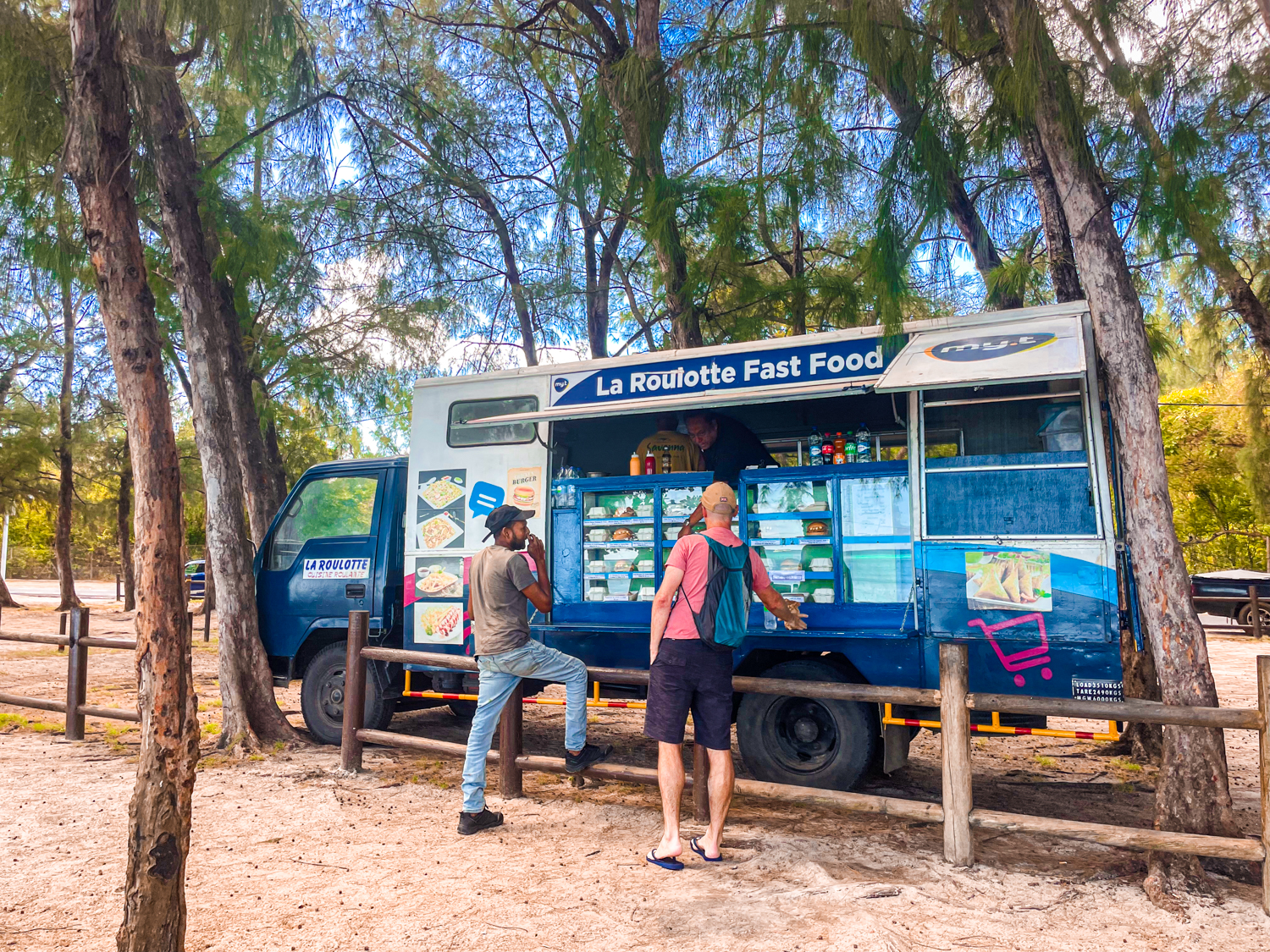
One of my favourite aspects of Mauritian beaches is the number of street food trucks that line them. On almost all of beaches I visited, there were several dozen food trucks beside the sand, offering anything from French fries ($2) to cheeseburgers ($1.30) to shrimp fried rice ($2.70) to samosas ($0.10) to curries ($1.60) to steamed chicken noodles ($2.20).
It was so convenient and meant that we didn’t have to break up our beach-lounging sessions by heading to a restaurant for lunch. Not to mention, the food was actually really high quality so amazing value for money!
And no, we didn’t get sick by eating the street food; food hygiene standards felt high here.
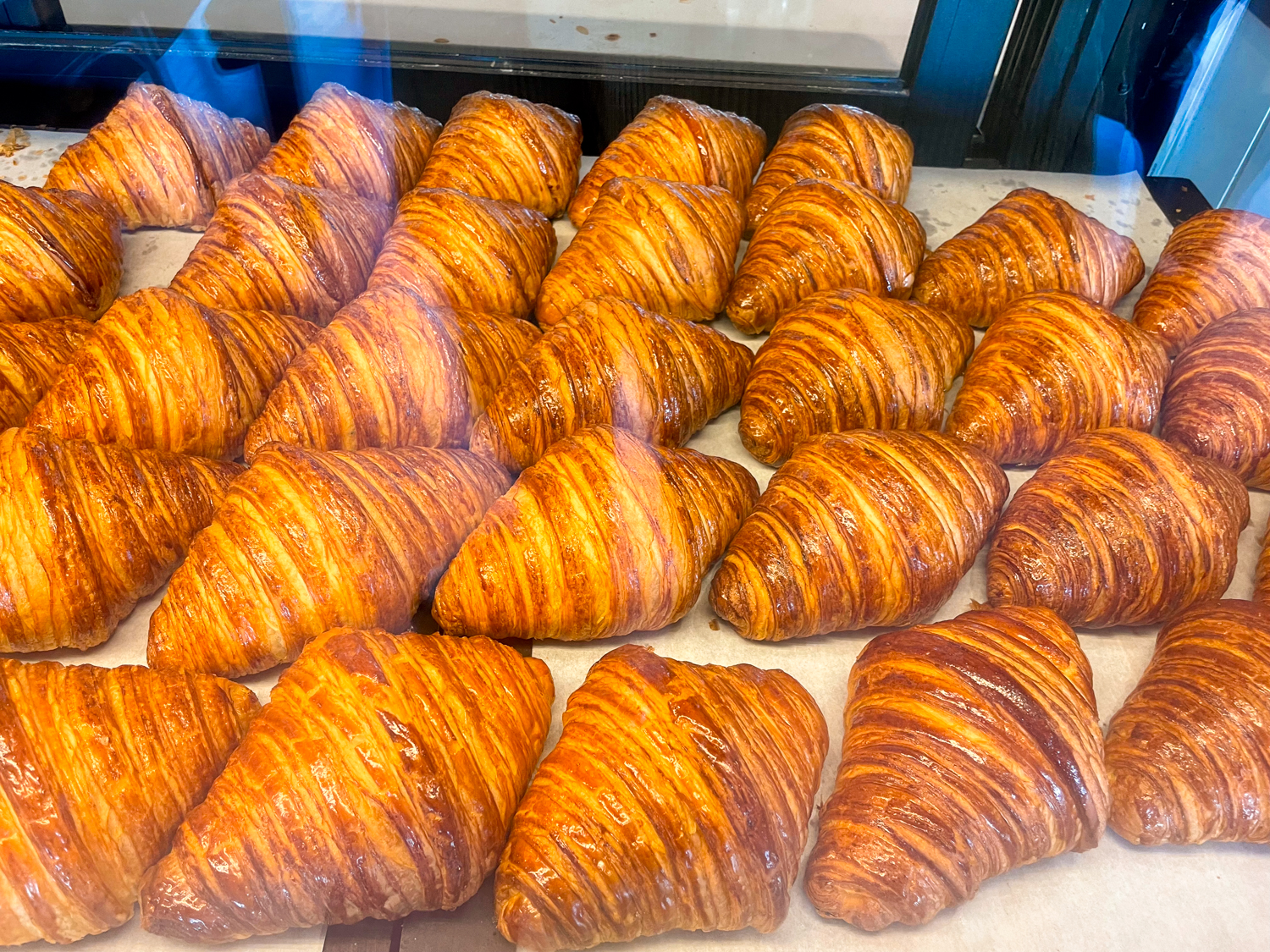
One of my food highlights from Mauritius was the breakfasts, and specifically: the breakfast pastries.
I started every single morning with a croissant, a pain au chocolat, and a pain au raisin (yes, really). All three had been freshly baked within the hour and I’d get them in a brown paper bag and walk down to the beach to eat them. At a price of $0.60 each, I was so impressed with the quality, as they were as buttery and flaky as the ones I’ve eaten in Paris.
There’s plenty of sit-down restaurants across the island, serving up all of the Mauritian classics. Here are some of my favourite dishes from the island, as well as what I paid for them:
- Rougaille (a rich, thick tomato-based stew that’s Creole in origin and is cooked with sausages or seafood): $9
- Fish Vindaye (a spicy, tangy fish-filled pickle, where the fish is first fried then pickled with mustard seeds): $11
- Magic Bowl (steamed rice, topped with a stir-fried vegetables and meat and a fried egg): $6
- Chicken biryani: $4
- Mine Bouille (Mauritian ramen! Boiled egg noodles in a rich fish/soy sauce and topped with chicken, egg, dumplings, and more: $3
The variation in the prices I paid is more based around the fanciness of the restaurant rather than the cost of the dish. Somewhere cheap and cheerful? You’ll be looking at $5 for dinner. Somewhere higher end? Budget for $10 a meal.
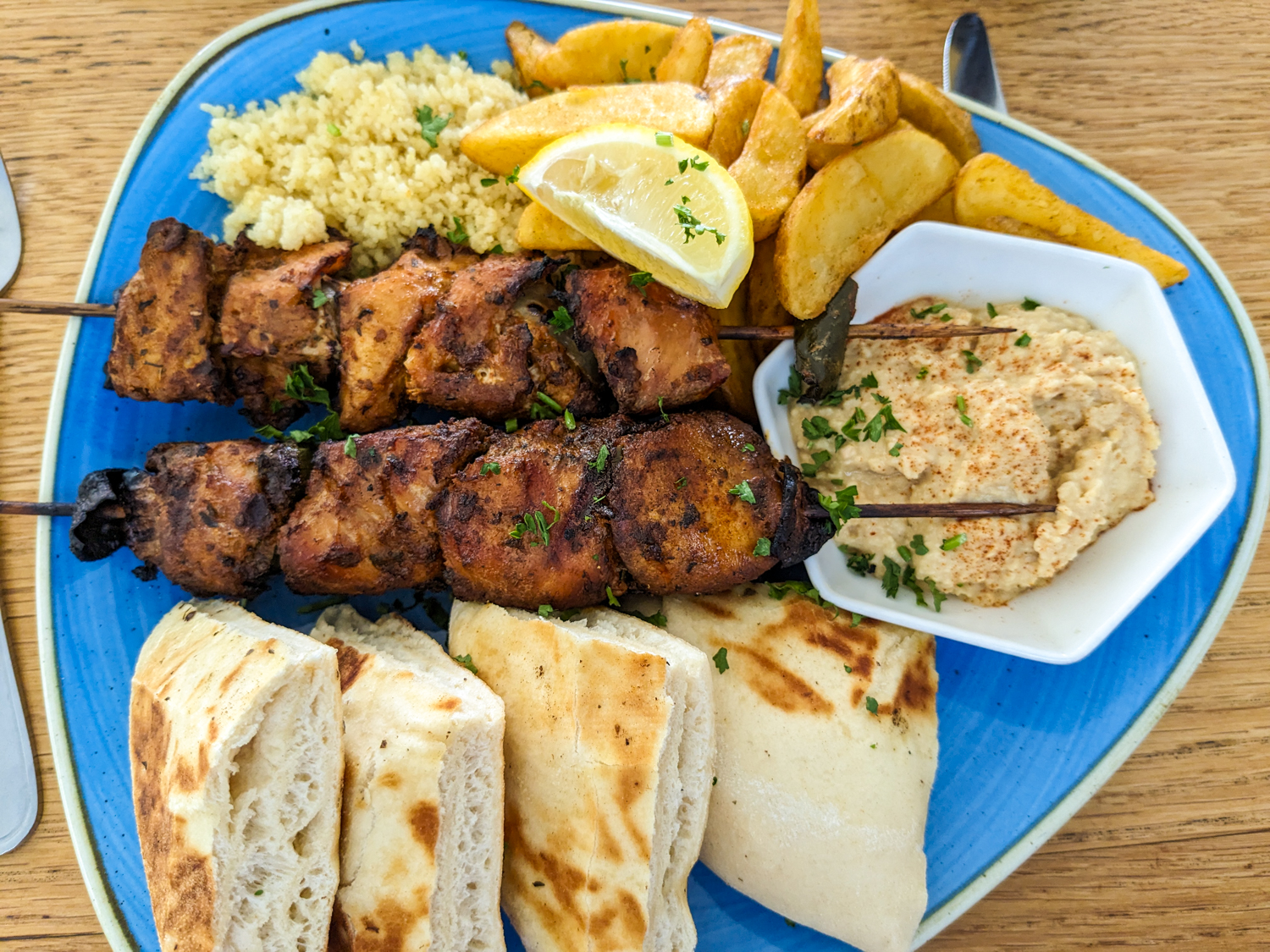
International food is readily available in Mauritius, but is likely to be of a lower quality than you’re used to (and more expensive than the local dishes). But hey, not everybody wants to eat curries for every meal!
If you’re going to be spending time in Grand Baie (the most popular town for tourists on the island), you’ll find the widest variety of cuisines there.
Dave and I opted for lunch from Greek restaurant the Trojan Horse while we were there and it was easily our most expensive meal on the island. The chicken souvlaki that’s pictured above came in at $15! Obviously that’s roughly what you’d pay in a Western city, but by Mauritian standards, it was expensive.
Yes, in Grand Baie, you’ll find Italian restaurants, Mexican places, South African eateries, seafood shacks, burger bars, BBQ joints, and more. There’s even a Nando’s! Expect to pay around $12-20 per meal for anything international.
Overall, I averaged the following food costs in Mauritius:
- Breakfast: $1.80 per day
- Lunch: $3 per day
- Dinner: $8 per day
- Drinks: $2 per day
And speaking of drinks…
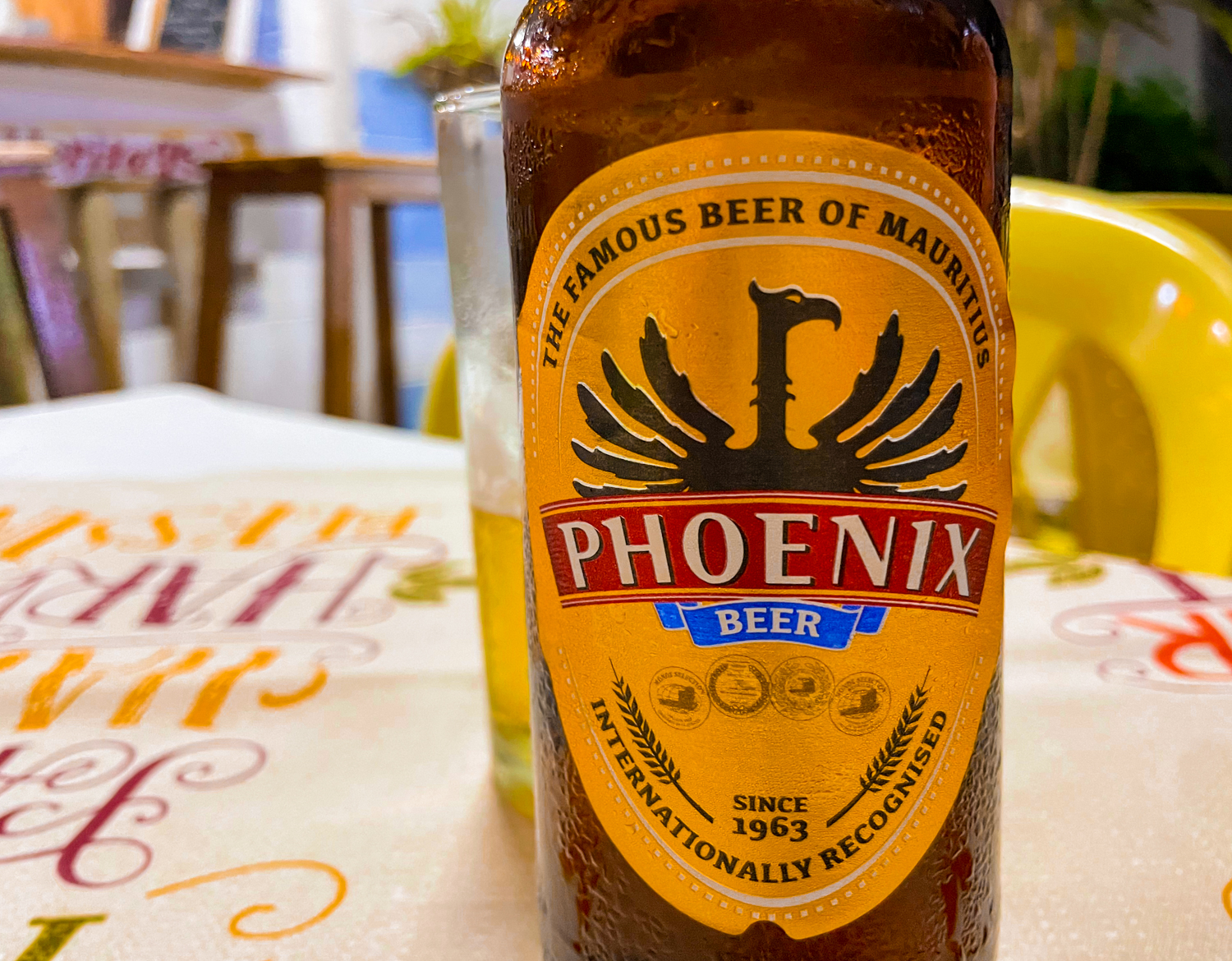
If you always enjoy check out the local beer when you travel, you’ll have to give Phoenix a try. We averaged $1.75 for a bottle of it with our meals. Soft drinks? We averaged $1.10 for a Coke with a meal at dinner.
The Cost of Activities in Mauritius
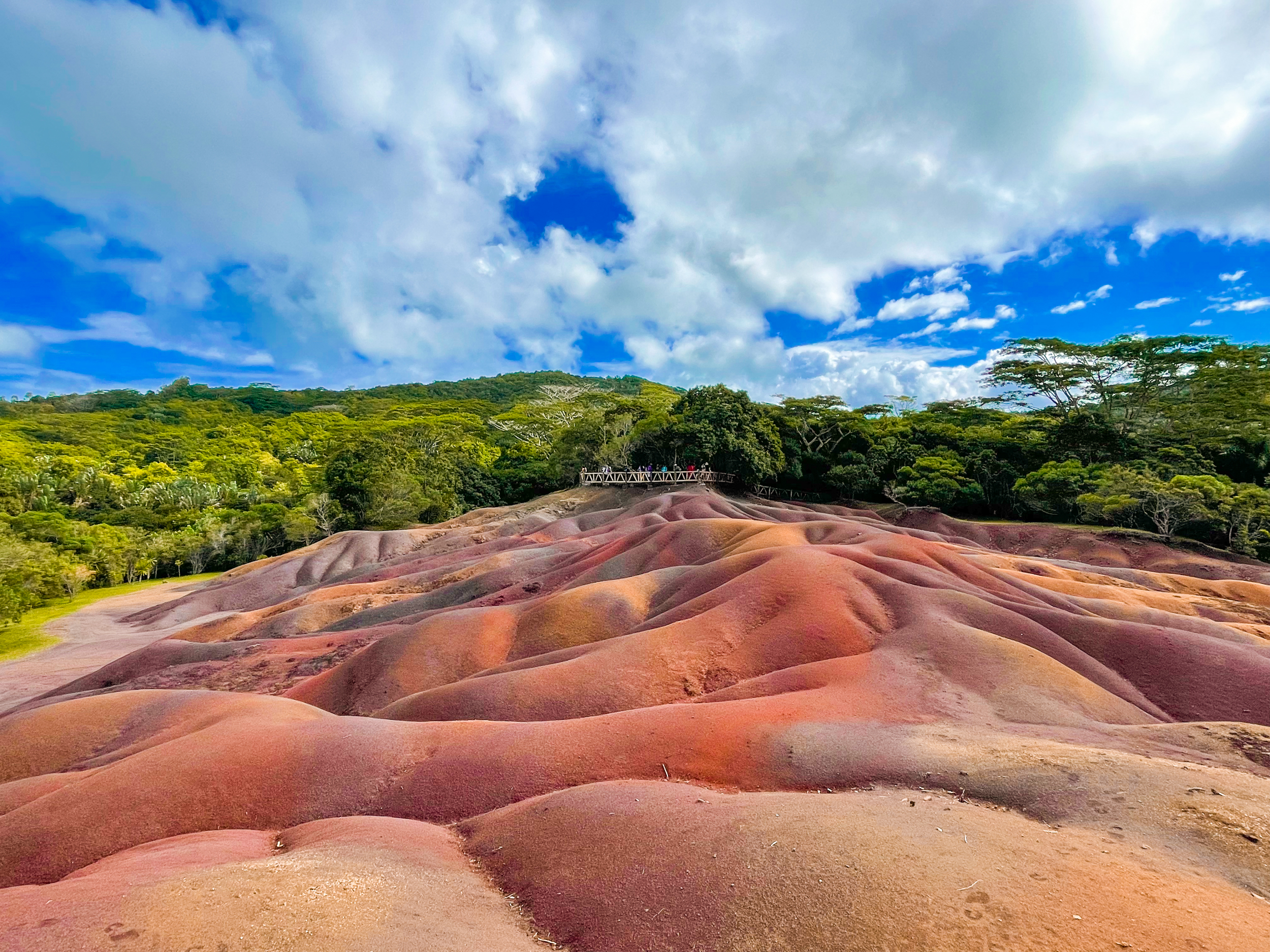
The good news about travel in Mauritius is that many of the country’s activities are completely free.
That’s one of the benefits of visiting a beautiful island that’s home to numerous white-sand beaches: if you’re here to spend your time on the sand, you won’t have to spend a penny to do so. Road tripping around the island will bring you to viewpoints aplenty; all free, of course. And walking through the food markets in the major cities provides a fascinating insight into local life while not costing anything to peruse.
And you can’t forget the hiking! Mauritius is a mountainous island, thanks to its volcanic past, and you can summit many of its peaks for free. Hiking Le Morne Brabant is the only hike that’s considered risky and so you’re recommended to tackle it with a guide, which costs $53. Aside from that, you’re free to hike and climb all over the island. We loved our hike to Black River Peak, which marks the highest point in Mauritius. Le Pouce was an easier climb, just outside of Port Louis, and famous for having been summited by Charles Darwin in 1836.
There are two UNESCO World Heritage Sites in Mauritius and they’re both free to access. Le Morne is a picturesque mountain in the southwest and Aapravasi Ghat details the history of immigration in Mauritius, from slavery to indentured labour to today’s blend of cultures.
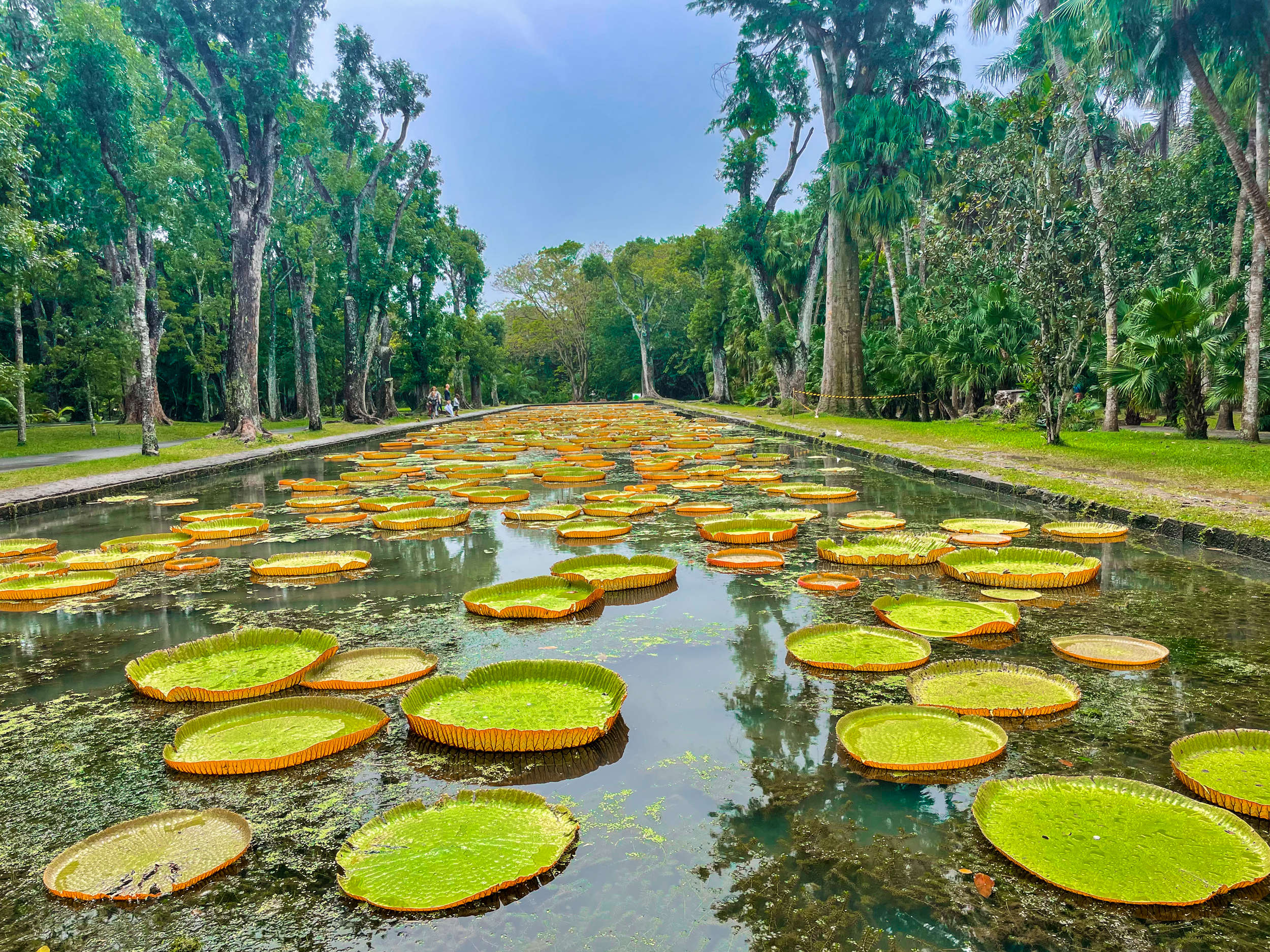
But what about the paid activities?
Seven Coloured Earths has an entrance fee of $5, which is definitely worth paying. Not only will you get to see the famous seven-coloured hills (they get their colours from the mineral content in the ground), but you’ll also get to hang out with a dozen giant tortoises and look out over Chamarel Waterfall, which is one of the tallest on the island.
Even if you don’t spend a night in Port Louis, it’s still worth swinging through for a couple of hours to see the country’s capital city. Sir Seewoosagur Ramgoolam Botanical Gardens cost $6.50 to enter and we spent two hours there in total. The Giant Lily Pads (in my photo above) are one of the main draws, but I was most excited to see the talipot palms. These rare palm trees grow for 75 years before they flower and fruit. However, the energy that it takes to flower is so vast that the tree immediately dies.
Port Louis Central Market is a lively spot and a good place for trying all of those local street food snacks. A street food walking tour comes in at $50 for three hours, but you could easily devise your own itinerary, pointing at anything that looks interesting and paying $1-2 to try it.
My Travel Expenses in Mauritius
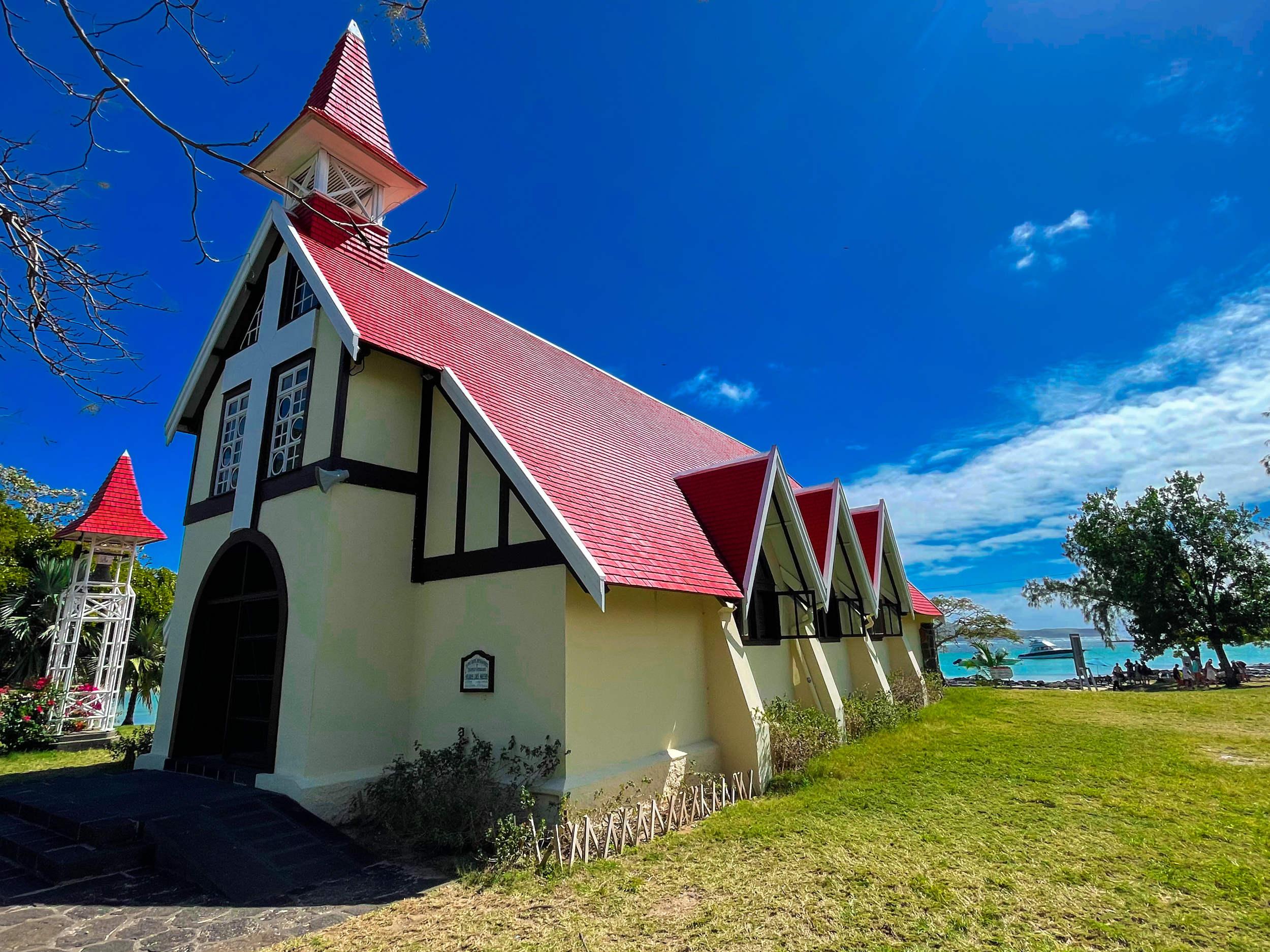
It’s time to tally up my expenses and see how much I spent during a week in Mauritius! (Note that I was travelling with Dave, so the accommodation and transportation costs have been halved to indicate my share of the expense)
Accommodation: $19.79 per day
Transportation: $15.19 per day
Food: $14.80 per day
Activities: $1.64 per day
Total amount spent in Mauritius: $51.42 per day!
When you consider that this was one of the best trips I’ve taken in the past few years, you can see why I’ve been singing Mauritius’ praises ever since!
This is a wonderful country that’s well-worth visiting. Delicious food, friendly people, beautiful beaches, and affordable prices: what more could you ask for?







No Comment